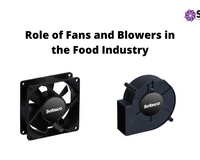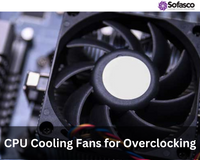A solar power inverter is a component in the solar power system that converts direct current (DC) generated by solar panels into alternating current (AC) for household or commercial use. This is why it is essential to cool the inverter properly to maintain its efficiency and prolong its operational life. Overheating can lead to reduced performance and premature failure. This post provides practical strategies to keep your solar inverter cool and extend its lifespan.
Common Causes of Inverter Overheating
Before moving to the solution part, let’s understand the actual root cause of inverter overheating. Below are the most common causes:
Environmental Factors
There are so many environmental factors that can cause overheating. The following are a few common ones among them:
- Inverters installed in locations exposed to direct sunlight absorb heat, which can raise their internal temperature.
- Hot climates or poorly ventilated areas increase the likelihood of overheating.
- Enclosed spaces or areas with restricted airflow limit heat dissipation.
Maintenance Neglect
Dust, debris, and other particulates can accumulate on the inverter and its cooling components over time. This buildup obstructs airflow and diminishes the performance of cooling systems like fans or vents. These obstructions can lead to overheating and reduced lifespan.
Installation Issues
Improper installation can significantly impact an inverter's ability to dissipate heat. Placing the inverter in confined spaces or areas with poor airflow prevents natural heat escape. Also, proximity to other heat-generating equipment can exacerbate overheating issues, as the combined heat load overwhelms the inverter's cooling capacity.
How to Cool Down the Solar Inverter?
Several cooling technologies, such as natural, liquid, and forced air cooling, are used to cool down the solar inverter. However, forced air cooling and natural cooling are quite popular. Here is the explanation of these technologies:
Natural heat dissipation: - Natural heat dissipation allows a heating device to release heat into the surrounding environment without needing extra energy sources. This method helps control temperature and mainly relies on three heat transfer methods: conduction, convection, and radiation. Natural convection is the primary method used.
Natural cooling works well for low-power devices and components that don’t require strict temperature control. It is best suited for devices that produce low heat flow and are sealed or closely packed, making other cooling methods unnecessary or unsuitable. Many single-phase and three-phase inverters under 20kW on the market use natural cooling.
Forced air cooling:- Forced air cooling involves using a solar inverter cooling fan to circulate air around the device, removing emitted heat. This method is simple and effective for ventilating heat. It is best utilized when there is adequate space between components for airflow or local heat sink installation. This method enhances forced convection heat transfer capacity by increasing the heat ventilation area. Also, it generates a relatively large forced convection heat transfer coefficient on the heat ventilation surface. It expands the heat dissipation area on the radiator surface, helping enhance the cooling of electronic components, which is commonly applied in engineering. In solar inverter cooling systems, heat sinks expand the radiator surface area for improved heat transfer. The material of the radiator significantly affects its heat dissipation performance. Radiators are primarily made of copper or aluminum, with extended heat exchange surfaces created through processes like folding fins or stamping thin fins.
How to Make the Solar Inverter Last Longer?
Like any other electronic product, solar inverters encounter many challenges with temperature. As per the US Air Force Avionics Overall Research Program survey, most product failure cases, raise heat up to 55%. The electronic parts inside a solar inverter are sensitive to heat. According to the 10-degree rule, for every 10-degree temperature increase, the inverter's service life is cut in half starting from room temperature. This means that a good cooling system for the solar inverter is fundamental. Here are several tips for efficiently cooling a solar inverter:
- The solar inverter generates heat, so it needs proper ventilation. Do not place it in a closed space, as the temperature will increase. Ensure the inverter is in a well-ventilated area and keep it out of direct sunlight whenever possible.
- When you install multiple solar inverters together, keep enough distance between them. This will help prevent any interference between the inverters.
- Using simulation software can help us better understand the thermal conditions of a system. During the cooling system design process, we can predict the operating temperature of each component. It allows us to adjust designs that are not feasible for the inverter structure, which shortens the design time, lowers product costs, and increases the chances of success on the first try.
- Using heat ventilation materials for radiators like steel, copper-aluminum composite, steel-aluminum composite, aluminum alloy, copper, stainless steel, etc. will help make the inverter last longer.
- A heat pipe is a heat transfer device known for its very high thermal conductivity. It moves heat by evaporating and condensing a liquid inside a sealed vacuum tube. It works well because it uses fluid principles, like capillary suction for effective cooling. It has several essential features, such as conducting heat efficiently, maintaining even temperatures, allowing for flexible heat transfer areas, and transporting heat over long distances. Also, they allow for temperature control.
Effective cooling of the inverter is crucial and requires careful consideration of various factors, including meteorological data, environmental influences, and the operation room's conditions. Once the appropriate cooling scheme is established, it is essential to implement improvements that enhance working conditions. Utilizing ventilation combined with cooling fans is highly recommended, as this approach reduces energy costs and ensures the reliability of the photovoltaic power plant.
If you are looking for the best solar power inverter, Contact us at Sofasco. The company offers a comprehensive range of UL, CUL and CE- certified, RoHS- compliant electronic cooling fans, including industrial blower fans, industrial axial fans, and radial blowers. For more information, reach the team at Sofasco.












